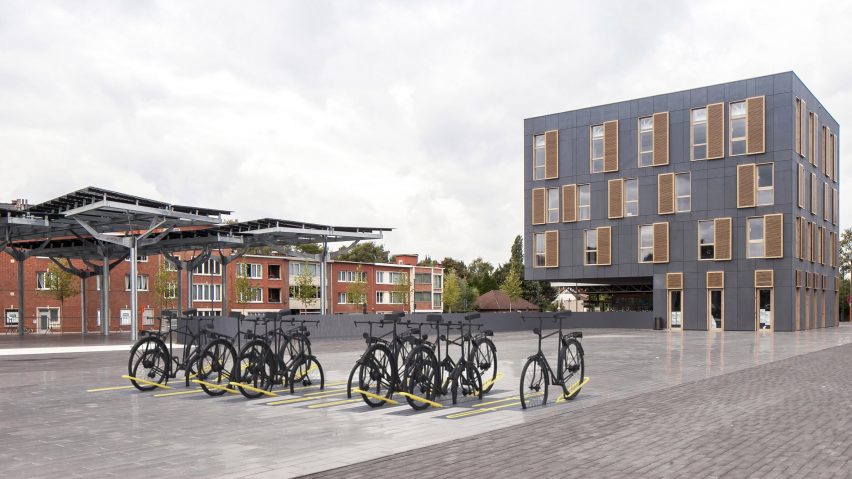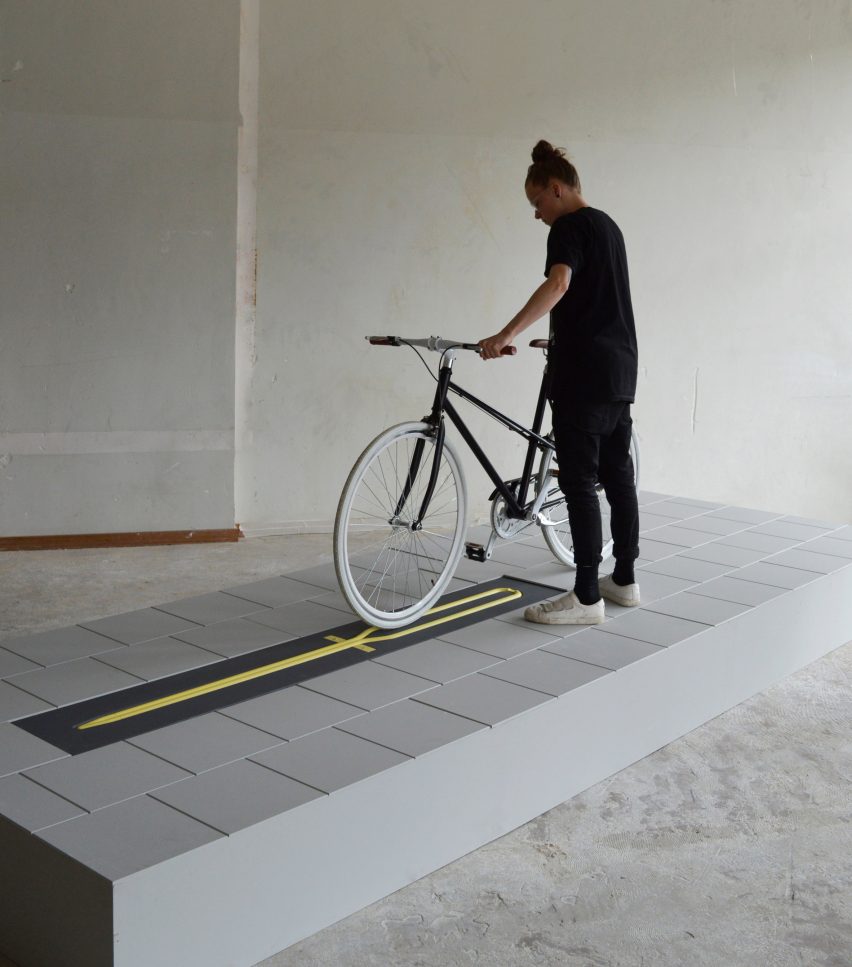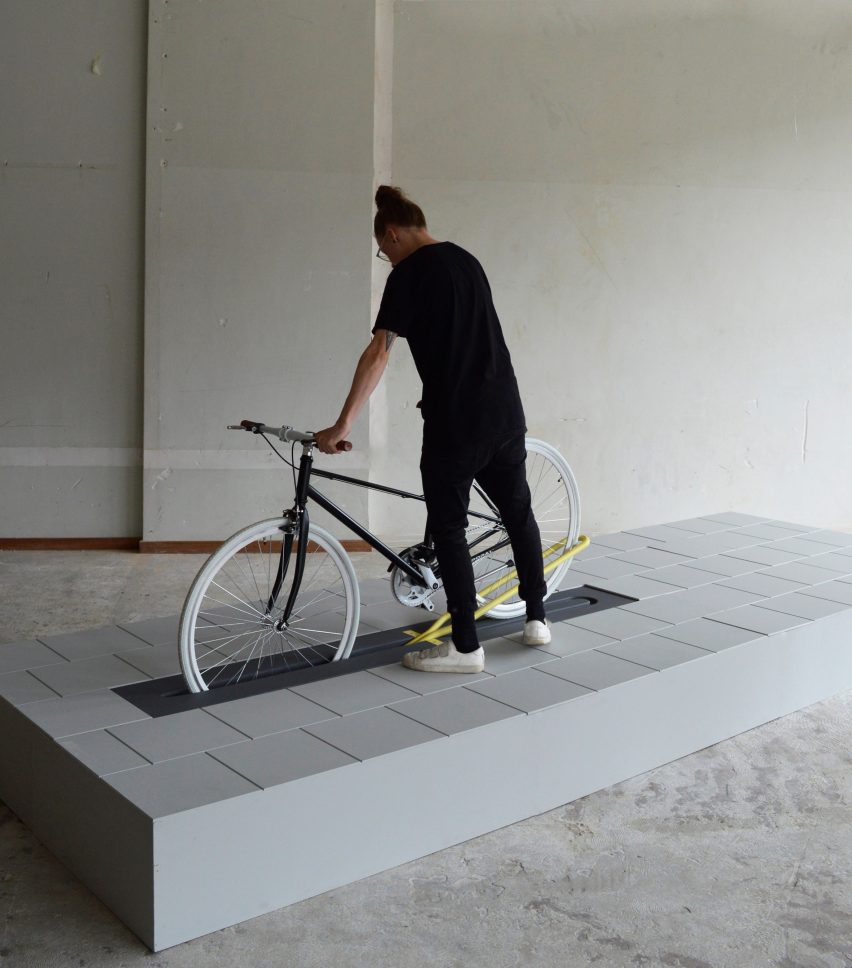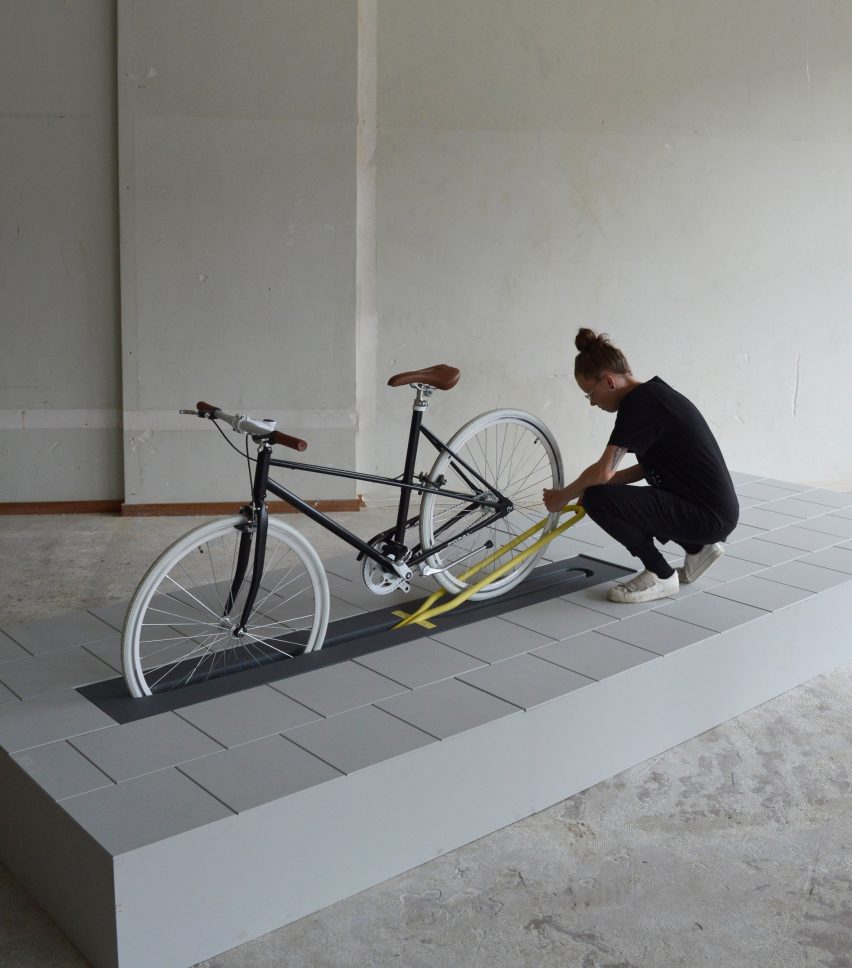
Milou Bergs' bicycle rack disappears into the pavement when not in use
Design Academy Eindhoven graduate Milou Bergs has designed a bicycle rack that only pops-up when needed, as an alternative to the "eyesore" storage systems populating towns and cities.
Bergs' Align project addresses the look of functional street furniture and the effect it has on public spaces.

Having studied in the Netherlands – a country famous for its volume of cyclists – Bergs focused her project on improving bicycle parking, aiming to find an alternative to the robust metal racks located around cities and towns.
"Bicycle racks are a particular eyesore," Bergs told Dezeen. "Even when not in use, they get in the way, creating physical and visual noise."
"I started to think about how I could make a space visually and physically serene while keeping the functionality of storage," she continued.

Bergs' bicycle rack works using a pop-up mechanism. When the weight of the front wheel is applied to a panel on the floor, a bracket raises up and locks onto the back wheel – securing the bike in place.
When the bicycle is removed, the rack "disappears entirely", and is hidden flat inside the pavement.
For Bergs, the intention behind this is to keep public spaces open and clear of excess objects.
"[It] means that public spaces can once again be open, making room for events, markets or everyday life," Bergs explained.

The design has already attracted the attention of Dutch municipalities, which have – according to the designer – shown interest in implementing the design into public spaces.
"It can be implemented on a larger scale once I have developed the bicycle rack in collaboration with a production company," she said. "At the moment I am researching and discussing the possibilities."
As the volume of bicycles in public spaces continues to increase, designers have come up with innovative ideas to utilise their impact on cities, including a bicycle that generates clean air as you pedal and a community bicycle that doubles as a mobile farm.
Bergs' Align project was presented at the Design Academy Eindhoven graduation show, which was taking part during this year's Dutch Design Week.
Other graduation projects from the academy's class of 2017 include a set of sensory objects that can be used to rehabilitate women affected by sexual abuse, and a wearable alternative to traditional hospital drips.